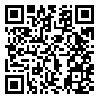دوره 17، شماره 18 - ( 10-1398 )
جلد 17 شماره 18 صفحات 55-45 |
برگشت به فهرست نسخه ها
Download citation:
BibTeX | RIS | EndNote | Medlars | ProCite | Reference Manager | RefWorks
Send citation to:



BibTeX | RIS | EndNote | Medlars | ProCite | Reference Manager | RefWorks
Send citation to:
Mousavi Sadati K. Designing software to estimate the relative interference between multiple tasks and determine its validity. RSMT 2019; 17 (18) :45-55
URL: http://jsmt.khu.ac.ir/article-1-400-fa.html
URL: http://jsmt.khu.ac.ir/article-1-400-fa.html
موسوی ساداتی کاظم. طراحی نرمافزار تخمین میزان تداخل نسبی بین تکالیف چندگانه و تعیین روایی آن. پژوهش در طب ورزشی و فناوری. 1398; 17 (18) :45-55
، drmousavisadati@gmail.com
چکیده: (5950 مشاهده)
متداولترین روش تجربی برای بررسی مسائل مربوط به محدودیت توجه، ارزیابی میزان تداخل در تکالیف دوگانه یا چندگانه است. هدف تحقیق حاضر، طراحی نرمافزاری برای تخمین میزان تداخل نسبی تکالیف چندگانه و ارزیابی روایی آن در پیشبینی اجرای چند تکلیف همزمان بود. برای سنجش روایی نرمافزار، 46 نفر از دانشجویان دانشگاه آزاد واحد تهران شرق که گواهینامۀ رانندگی داشتند، با روش نمونهگیری در دسترس انتخاب شدند. زمان پاسخ مشارکتکنندگان به محرک بینایی و شنوایی در حین رانندگی در موقعیتهای مختلف با استفاده از نرمافزار و سختافزاری که روی اتومبیل آنها نصب شده بود اندازهگیری شد و سپس، میزان تداخل نسبی در آن موقعیتها با بهرهگیری از نرمافزار تخمین میزان تداخل نسبی محاسبه شد. تجزیه و تحلیل یافتهها با آزمون همبستگی پیرسون، نشان داد که بین میزان تداخل تخمینزدهشده با نرمافزار و زمان پاسخ اندازهگیریشدۀ شرکتکنندگان در شرایط مختلف رانندگی همبستگی بالا، معنیدار و مستقیم وجود دارد (r=0/95 ،p≤0/01). بنابراین، از نرمافزار طراحیشده میتوان برای پیشبینی میزان تداخل بین دو یا چند تکلیف همزمان استفاده کرد.
نوع مطالعه: پژوهشي |
دریافت: 1398/11/16 | پذیرش: 1398/11/16 | انتشار: 1398/11/16
دریافت: 1398/11/16 | پذیرش: 1398/11/16 | انتشار: 1398/11/16
فهرست منابع
1. 1. McGarry, T., O'Donoghue, P.,de Eira Sampaio, A.J. (2013). Handbook of Sports Performance Analysis, Publisher: New York : Routledge. [DOI:10.4324/9780203806913]
2. 2. Koedijker, J.M., Poolton, J.M., Maxwell, J.P., Oudejans, R.R., Beek, P.J., Masters, R.S. (2011). Attention and time constraints in perceptual-motor learning and performance: Instruction, analogy, and skill level. Consciousness and Cognition. 20(2):245-56. [DOI:10.1016/j.concog.2010.08.002]
3. 3. Shaw, M.L, Mulligan, R.M., Stone, L.D. (1983). Two-state versus continuous-state stimulus representations: A test based on attentional constraints. Perception & Psychophysics. 33(4):338-54. [DOI:10.3758/BF03205881]
4. 4. Edwards, W. (2010). Learning and Motor Control from Theory to Practice - Volume II, Mousavi Sadati, S.K. (2014). Publisher: Hatmi. First Edition. 165-7. (Persian)
5. 5. Driver, J. (2001). A selective review of selective attention research from the past century. British Journal of Psychology. 92:53-78. [DOI:10.1348/000712601162103]
6. 6. Welford, A.T. (1952). The 'psychological refractory period' and the timing of high‐speed performance-a review and a theory. British Journal of Psychology. General Section. 43(1):2-19. [DOI:10.1111/j.2044-8295.1952.tb00322.x]
7. 7. Norman, D.A. (1968). Toward a theory of memory and attention. Psychological Review. 75(6):522-36. [DOI:10.1037/h0026699]
8. 8. Schmidt, R., Lee, T. (2014). Motor learning and performance: From principles to applications. Human Kinetics. 205.
9. 9. Magill, R.A. (2016). Motor learning: Concepts and aplications. Vaez Mousavi, M.K., Shojaie, M. Publisher: Bamdad Ketab. 196-9. (Persian)
10. 10. Kahneman, D. (1973). Attention and effort: Prentice-Hall Inc., Englewood Cliffs, New Jersey. 145-8.
11. 11. Navon, D., Gopher, D. (1979). On the economy of the human-processing system. Psychological Review. 86(3):214-55. [DOI:10.1037/0033-295X.86.3.214]
12. 12. Wickens, C.D., Kessel, C. (1980). Processing resource demands of failure detection in dynamic systems. Journal of Experimental Psychology: Human Perception and Performance. 6(3): 564-77. [DOI:10.1037/0096-1523.6.3.564]
13. 13. Pashler H, Johnston JC, Ruthruff E. (2001). Attention and performance. Annual review of psychology. 52(1):629-51. [DOI:10.1146/annurev.psych.52.1.629]
14. 14. Wickens, C.D. (2008). Multiple resources and mental workload. Human Factors. 50(3):449-55. [DOI:10.1518/001872008X288394]
15. 15. Wickens, C.D. (2002). Multiple resources and performance prediction. Theoretical Issues in Ergonomics Science. 3(2):159-77. [DOI:10.1080/14639220210123806]
16. 16. van Engelen, D. (2011). Attention Drivers: RWTH Aachen University; 11-22.
ارسال پیام به نویسنده مسئول
| بازنشر اطلاعات | |
 |
این مقاله تحت شرایط Creative Commons Attribution-NonCommercial 4.0 International License قابل بازنشر است. |







